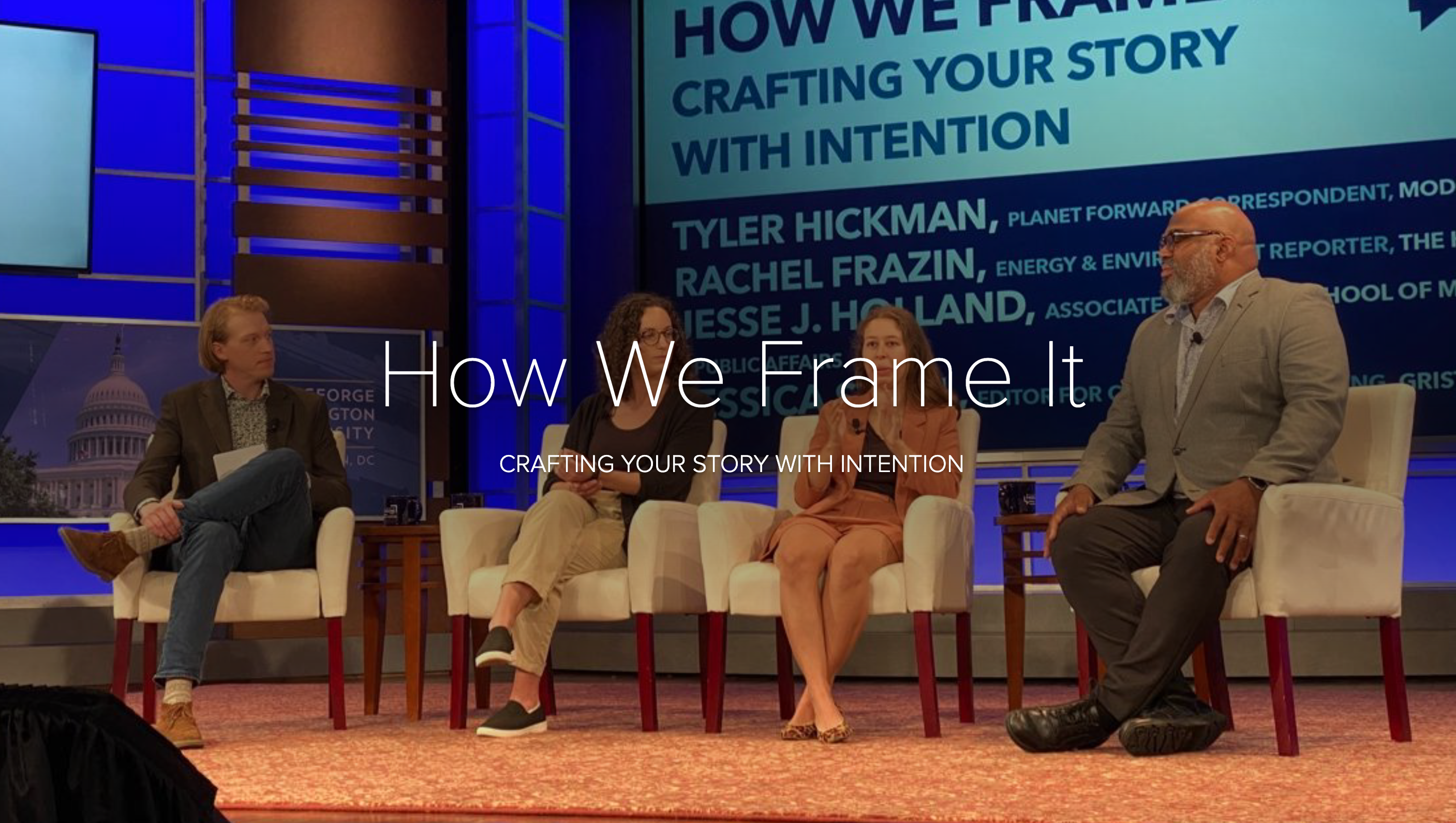By Carson Davis
This year’s Planet Forward Summit welcomed nearly 500 students, faculty, and professionals into GW’s Jack Morton Auditorium. Opening with five panel discussions on effective sustainability storytelling, the Summit left me feeling uplifted, inspired, and ready to challenge conventional journalistic approaches to the climate crisis.
One segment in particular, How We Frame It: Crafting Your Story with Intention, captured my attention. Moderated by Tyler Hickman, a Planet Forward Correspondent from University of Colorado-Boulder, the segment navigated some of sustainability storytelling’s most tricky questions. How do you craft an engaging story? With whom do you craft it? What can we do to ensure our storytelling is timely and impactful?
See my Big 3 takeaways from the How We Frame It segment below:
1.) Framing should be participatory.
Sustainable storytelling is dependent on defining a character. One key piece of advice from panelist Jessica Stahl, Editor for Creative Storytelling at Grist, was to include ‘frontline communities’ that your story describes in the crafting of the story itself. Coming from a background of focused, decisive reporting, Stahl encouraged us all to bring our characters into the storytelling process. Her journalistic niche is ensuring those most impacted by climate change are receiving the media attention they deserve. In this way, Stahl urges us to give platform to the characters of our stories (given they are tangible individuals) in a way that directly supports their needs. When participatory, your story’s frame will undoubtedly make an impact.
2.) Framing should be multidisciplinary.
While you may believe that you know how to tell a story best, consider the opinions and input of others. That’s what Rachel Frazin, Energy and Environment Reporter for The Hill, suggested to an eager and receptive audience. Frazin works for a publication that caters to a wide range of media consumers, often necessitating strict editing, fact-checking, and revision processes. As an energy and environment reporter, she understands the weight her journalism carries, especially for an audience that may not be expecting climate news. Frazin’s strategy is to utilize the input and skills of those around her to synthesize a better end product. The climate crisis requires meticulous and intentional storytelling, and Frazin urged us not to shy away from our coworkers, colleagues, and peers in times of need.
3.) Framing should be flexible.
For Jesse J. Holland, journalism is an act of adaptability. The Associate Director and Associate Professor of the School of Media and Public Affairs at George Washington University regaled the Planet Forward audience with his perseverance. Declaring himself a “wordsmith” by trade, Holland reminded us that journalism is always changing, evolving, and reinventing itself. Further, he emphasized the importance of flexible framing and ensuring the integrity of your story within that flexibility. Just as you match a particularly sized photo to a frame, sustainable storytelling must do the same. Holland reminded us that journalistic quality is only determined by the storyteller’s ability to adapt and grow alongside their work.
Carson Davis is an academic assistant for the GW Alliance for a Sustainable Future and is a dual-degree BA/MPH student in the Milken Institute School of Public Health.


